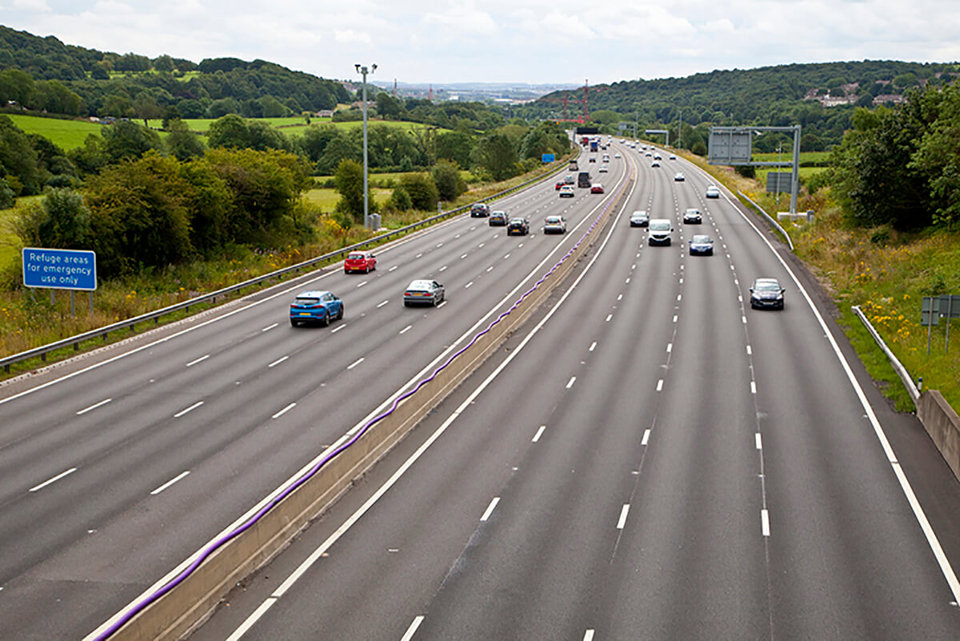The national network of motorways and trunk roads will get extra lanes, smoother, quieter surfaces, improved junctions and new sections in key areas under a plan published by Transport Secretary Patrick McLoughlin.
Fully funded in June's spending review, £28bn of investment - which includes a trebling of funding for motorways and major A-roads - will lead to the biggest ever upgrade of the existing network.
The focus will be on cutting congestion and minimising the environmental impact of roads, including an extra £500m to make Britain a world leader in electric vehicle technology.
These measures complement record investment in rail, ambitious plans for HS2 and continued funding for buses to ensure growing demand for travel does not swamp the road network.
They also deliver on the Government's commitment to providing the infrastructure needed for economic growth.
McLoughlin said: "Our major roads are vital to the prosperity of our nation, connecting people to jobs and businesses to markets. They carry a third of all traffic and two thirds of all freight traffic but in recent decades we have failed to invest properly in them.
"That underinvestment has seen us fall behind many of our economic competitors.
“Since 1990, France has built more motorway miles than exist on our entire network, while Canada, Japan and Australia all spend four times more on their roads than we do.
"These changes will bring an end to the short-term thinking that has blighted investment in England's roads so that we can deliver the infrastructure our economy needs.
"Backed by the Government's £28bn commitment, they will give us a road network fit for the 21st century and beyond."
The Government's new paper, 'Action for Roads', will see the Highways Agency turned into a publicly owned company with six-year funding certainty for capital projects and maintenance.
This funding and reform will be underpinned by legislation so future governments cannot walk away from these commitments.
It will give the construction and maintenance industry the confidence they need to recruit and train skilled workers to deliver this increase in transport projects over the coming years. It is estimated that the reforms could save £600m for the taxpayer.
The package also includes a boost for low-carbon road travel.
By committing £500m to support the UK ultra-low emission vehicle industry the Government is demonstrating its determination to support UK jobs while achieving the twin goals of decarbonising motor vehicles and improving air quality.
In addition, bridges and tunnels will be built to help cyclists and walkers to move between communities where motorways and major A-roads make these journeys difficult.
BVRLA chief executive Gerry Keaney: said: “UK road users pay £47bn in motoring taxes each year and will welcome the fact that more of this money will be used to make their journeys safer, less congested and with a reduced impact on the environment.”
The BVRLA has consistently called for the Highways Agency to be made a publically owned, non-political body that can provide a long-term continuity of investment for motorists.
He continued: “As the trade body representing the business motorist we are keen to work with the Department for Transport in developing a robust ‘Motorists Champion’ that can speak for the needs of consumers and at-work road users.
“We also look forward to helping OLEV (Office for Low Emission Vehicles) allocate this extra £500m for electric vehicles.
“The current range of plug-in incentives have had a disappointing impact on the market for ultra-low carbon vehicles.
“We believe that some of this new £500m should be spent on longer-term, in-life incentives such as VED-exemption, subsidised charging points and free parking, which would support current owners of electric cars and vans and stimulate demand for used plug-in vehicles.”
The scale of additional funding being made available for strategic roads will allow more investment in environmental safeguards to help resolve and reduce long-standing environmental problems.
These could include better landscaping, tunnelling, ‘green' bridges and noise barriers to improve roads' environmental performance.
The announcement follows the Prime Minister's call last year to set out a comprehensive and ambitious vision for the road network to ensure that it is delivering for business and the economy.
The Government's reform and funding package represents the biggest ever upgrade of our existing roads, including:
• 221 extra lane miles of 'Managed Motorways', linking existing stretches between the North West, Birmingham and London to create a new Managed Motorway Corridor.
• 52 major projects funded with funding available for further enhancements to be identified through a comprehensive review of the network's performance.
• Schemes to improve important freight routes, like the A14 and four lane capacity on the M4 from London to Reading.
• £12 billion for road maintenance over the course of the next parliament with £6 billion of this for maintenance and resurfacing 80% of our motorways and major A-roads by 2020.
• The remaining £6 billion will be spent on tackling the backlog of maintenance and reduce potholes on local roads which make up the rest of the country's road network.
• Feasibility studies to solve problems at the most notorious hotspots on the road network - the A303 to the South West, the A1 North of Newcastle, the A1 Newcastle to Gateshead, trans-Pennine routes between Manchester and Sheffield and the A27 on the South coast.
• Faster delivery - work is already underway to look at how schemes can be planned and delivered more quickly so that the benefits of these new schemes can be felt as soon as possible.
The Government will introduce a legal framework to guarantee investment through a roads investment strategy.
This model already exists for the railways and it will set out plans and performance criteria for the next five years of building and maintenance as well as the next ten years of project development.
The Department for Transport intends to consult on these proposals in autumn 2013.


















Login to comment
Comments
No comments have been made yet.